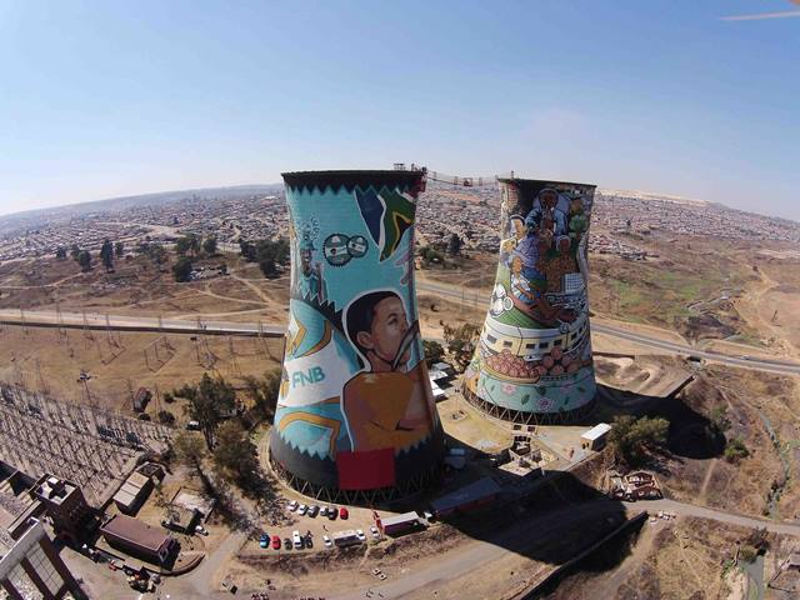Fascination About Johannesburg North Attractions
Table of ContentsSome Known Details About Johannesburg North Attractions The smart Trick of Johannesburg North Attractions That Nobody is Discussing7 Easy Facts About Johannesburg North Attractions ShownUnknown Facts About Johannesburg North AttractionsSome Ideas on Johannesburg North Attractions You Need To KnowThe 7-Second Trick For Johannesburg North Attractions
The city expanded on the side of the Witwatersrand Main Coral reef, a subterranean stratum of gold-bearing quartz-silica empire that arcs for hundreds of miles under the Highveld - Johannesburg North attractions. Most of the gold mines in the city stopped operation in the 1970s, but in its day the Witwatersrand gold sector accounted for even more than 40 percent of the globe's yearly gold manufacturing.Johannesburg has a pleasant climate. Summertime temperature levels balance concerning 75 F (24 C); winter temperatures average about 55 F (13 C) and only sometimes dip below cold. The city enjoys concerning 8 hours of sunlight daily in both winter months and summertime. Rainfall standards regarding 28 inches (700 millimetres) per annum, but the complete varies significantly from year to year.
What rain the city receives drops almost specifically in the summer season months, often in spectacular late-afternoon electrical tornados. Air pollution poses a significant issue, particularly in the winter season, when thermal inversions impede the westward circulation of air from the Indian Ocean. Air pollution is most extreme in the densely worked out Black townships on the city's periphery, where many locals still depend on coal for fuel.

Our Johannesburg North Attractions PDFs
The balance of the city is occupied by whites. Holiday accommodation varies in character and quality.
Physical development, although rather limited by transport, proceeded quickly as migration to South Africa, and Johannesburg particularly, enhanced dramatically. This issue was solved in the 1930s when the automobile was introduced in mass manufacturing to South Africa. Autos were, generally, constrained to the affluent, and permitted them to move to the north of the city and commute into find more information the centre.
A lot of bad suburbs were blended, with inadequate blacks and whites living together, although the rich residential areas were normally scheduled for whites.
The previous system of eleven numbered areas was reorganised in 2006. Marshalltown, as seen from the top of the Carlton Centre. The M1 and M2 run behind the buildings, and the southerly suburbs prolong past the highway boundary. The central city of Johannesburg lies within the city's Region F. The estimated population of the area is 200,000, [] The number of individuals living in the internal city on an informal basis is unknown, as several are unlawful immigrants. Most higher-income locals and white people have actually transferred to the northern suburbs and have actually been replaced by lower-income black individuals. The joblessness, education, and age profiles of the location are all unknown, as a result of the trouble of obtaining trusted info regarding the area.
The 10-Minute Rule for Johannesburg North Attractions
Centred on the CBD, the area consists of the residential areas of Yeoville, Bellevue, Troyeville, Jeppestown, and Berea to the eastern. To the west it spreads out to Pageview (Johannesburg North attractions) and Fordsburg. There are tiny industrial parks to the south, such as City West-Denver and Benrose. Around 800,000 travelers go through the internal city on a daily basis, and it operates as a local shopping node for site visitors from the southern suburbs. Yeoville and Bellevue have a mix of apartment structures and single domestic systems on small great deals. The region is situated on a mountainous divide that runs from east to west.

The smart Trick of Johannesburg North Attractions That Nobody is Discussing
The eastern suburbs are some of the oldest locations of Johannesburg, there are big communities of Jewish and various other European backgrounds, the majority of the population is English talking. There are 3 golf training courses as well as a number of secured Recommended Site ridges with viewsites.
Originally built to house male migrant employees, lots of have been enhanced as homes for couples and households. The suburb was not traditionally enabled to produce work centres within browse around here the area, so virtually all of its citizens are commuters to other components of the city.
Johannesburg North Attractions Things To Know Before You Buy
The domestic locations in the north residential areas are mainly formal, with no substantial areas of casual real estate, or real estate that lacks a permanent framework. This is a well established area, there is a pattern of land usage change from residential to industrial, specifically along main arterial roads and around well-known nodes.
The location is well linked to roadway networks, especially along the north-south axis formed by the M1 and N1. Roadways to the east and west are less well developed, as there are no highways travelling because direction. In the direction of the northern border of the city, the thickness of advancement decreases, leaving huge locations of undeveloped land around Midrand.
The Buzz on Johannesburg North Attractions
, which is situated on a hill ignoring the inner city and Hillbrow.
Comments on “Not known Details About Johannesburg North Attractions”